Alcoholic beverages
Alcoholic beverages were invented thousands of years ago, and have since given humankind pleasure as well as trouble.
The customs, costs and laws for drinking vary greatly between countries. While some destinations are better known for their alcoholic beverages than anything else, other places totally ban alcohol. Therefore, a traveller needs to know and adapt to local drinking customs.
Understand
| “ | First you take a drink, then the drink takes a drink, then the drink takes you. | ” |
—F. Scott Fitzgerald | ||
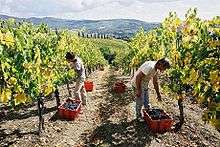
Alcoholic drinks have been exported since ancient times, and with today's global economy, it is easy to purchase the most famous brands of beer, wine, and distilled beverages in many parts of the world. However, if you would like to try any of the many wines that are produced in small vineyards for local and private sales only, the beers brewed only in specific brew-houses, small-batch bourbon whiskeys that are hard to find outside of Kentucky; if you'd like to visit a rum distillery or a sake brewery and learn how the drinks are made; or if you'd like to enjoy Asturian cider in a sidrería — a bar specifically focusing on cider — or a Manhattan in Manhattan, there is still no substitute for travelling to where the drinks are produced and experiencing the local drinking culture. It is also important to know something about the drinking culture in any place where alcohol is commonly used.
Beer
- See also: Beer (beverage)
Beer is the world's dominant alcoholic beverage, by volume. Some of the most renowned beer-producing countries are Germany (especially the South, with Franconia and Bavaria having the widest variety), the Czech Republic, Belgium, the Netherlands, the United Kingdom and Ireland, but many other countries produce beers, some of them quite famous in their own right. There are some brew-houses in northern and central European countries that make and serve their own beer, sometimes in two or three varieties (e.g., light beer, dark beer, and Hefeweizen [wheat beer]), along with full meals or/and snacks.
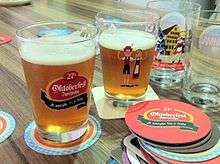
In recent years "craft beers" have become popular and many small and artisan breweries have flourished all over the world, producing a wide variety of different beers with new flavors and ingredients being experimented with. India Pale Ale (IPA) is the most common type, as its high content in hops and somewhat higher alcohol content allow for a wide variety of flavors to be explored. While some small breweries send their product almost everywhere through the postal service others can only be bought locally and the sophistication (and sometimes prices) often match those of fine wines.
Corn-based fermented beverages
In most of South and Central America fermented beverages on the base of corn (maize) are commonplace and mostly known under the name "chicha". However, depending on the region, a more specific term like "chicha de maíz" may have to be used to refer to a corn-based drink specifically. Local varieties add fruit juices or other ingredients to the mix, making for a wide variety of flavors. Non-alcoholic varieties also exist, so asking exactly what is meant by "chicha" comes highly recommended. Some varieties of chicha are produced similarly to beer, including a malting step to transform the starch into sugar, whereas others are made more like sake (see below), or with the starch being transformed by enzymes in the saliva. As the alcohol content usually rises with the age of the beverage, it doesn't store or transport particularly well and is thus often only available locally.
Wine
- See also: Wine
Wine is arguably the most sophisticated of beverages. There are many wine-growing regions throughout the world. Some of the countries best-known for wine are France, Italy, Spain, Germany, the former Soviet republic of Georgia, the United States, Australia, Argentina and South Africa, and there are good wineries in quite a number of other countries. Due to climate change wine is now being grown in some unlikely places as well, such as southern Sweden.
Sake, a specialty of Japan, is more closely related in method of production to beer, but is usually considered to be rice wine, and at higher quality levels, is equally refined and complex.
Makgeolli (막걸리, sometimes known as takju) is unrefined rice wine, a Korean drink sometimes made with corn, wheat, millet and other ingredients as well as rice. Easily brewed at home, it was the most common beverage in Korea before bottled beverages became common, and every region of South Korea has its own distinct local varieties. Gangwon-do's gangnaegni yeotsol is a sweeter variation made with corn and malt as well as rice; Anyang's ongmiju is a variation made with brown rice, corn, sweet potato, and malt. Jeju's omegisul is a similar drink made from millet rather than rice. Okcheon, in North Chungcheong, has a variety made with turmeric, Okcheon Ulguem Makgeolli. The city most famous for makgeoli in Korea is Jeonju, but shops are everywhere.
You'll easily recognize Geumsan's ginseng wine, insamju, with the root of ginseng visible in the yellowish liquor — but don't be fooled by the cheaper drinks that are just ginseng roots soaked in liquor.
Distilled beverages

Distilled drinks are stronger than beer or wine. They are commonly mixed in cocktails, but they can also be consumed straight, in smaller amounts.
Liquor was invented in the Middle Ages, and became an important trading commodity during early modern times. Since freight was expensive, liquor was more profitable to export than the more bulky crops it was made from. It was used as an informal currency, and as payment to workers, soldiers and sailors. Distilling was among the first large-scale industries in the Americas, and many of today's cities have sprung up around them.
Whisky or whiskey (different countries and even brands have varying preferences about which spelling to use) used to be a regional specialty of the British Isles, and Scotch and Irish whiskey distilleries are still famous and profitable today. However, whiskey is now produced in many other parts of the world as well. One notable non-British style of whiskey is bourbon, originating from and still mostly produced in the American state of Kentucky. There is also rye whiskey (called "rye" for short), which because it is distilled from rye mash instead of wheat, corn, and/or barley mash, has a subtly different (often somewhat stronger or "spicier") taste.
- See also: Kentucky Bourbon Distilleries Tours
Scotch whisky has a very distinct taste, as compared to other varieties of whisky, in that it has a quality of peatiness to various degrees, which is imparted to the whisky mainly to the degree that the barley used in it is exposed to peat smoke; peaty scotches are quite smoky-tasting. Some scotches are only very subtly peaty, while others are to an extreme degree.
Vodka, a strong spirit which is most often almost exclusively alcohol and water, is usually served neat in Eastern Europe, the Baltic States, Russia, Central Asia, and the Nordic countries. In other areas it's more often part of cocktails. Vodka may also be flavored with the addition of a syrup or essence of a fruit or herb (for example, cranberries, horseradish).
In Nordic countries, akvavit, snaps or brännvin/brennevin (lit. "burned wine") is unflavored or flavored vodka, usually consumed in shot glasses. In contrast to the fruity German schnapps, the seasoning is usually bitter or aromatic spices, such as dill, fennel, or wormwood.
Rum is traditionally distilled from molasses or cane syrup in the Caribbean. Central American countries such as Guatemala and Nicaragua also produce world class rum, as does Guyana in South America. Cachaça, a related drink distilled from cane syrup, is a Brazilian product. There are also some popular rums and rum-based liqueurs outside the Americas including the Austrian Stroh or more generically "Inländer-Rum" (a common ingredient in the drink Jagertee, which is drunk hot like mulled wine and has become culturally linked with skiing in the minds of many) and the Estonian liqueur Vana Tallinn (lit. Old Tallinn). Innländer Rum is or has historically been made from products of beet sugar manufacture as opposed to sugarcane derived "normal" rum. Moreover Bundaberg Rum is one of the internationally best known Australian spirit drinks.
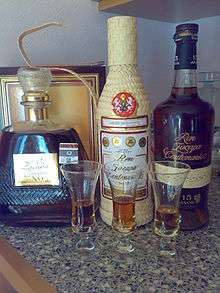
Gin, a traditional drink of the British Isles but also produced in various other places, is fermented primarily from juniper berries. It is most commonly used in cocktails, but its living ancestor, Jenever, which is popular in the Low Countries and parts of France and Germany, is often drunk neat.
Mezcal and Tequila, both distilled from varieties of agave (maguey and blue agave, respectively), are traditional products of Mexico. The initial phase of tequila production is to steam-bake the heart (piña) of the agave, whereas the piña is baked over charcoal in the initial phase of mezcal production, so mezcals often have a smoky taste that may remind you of a peaty scotch.
Soju (Korea) or Shochu (Japan) is a spirit traditionally made from rice, but more recently also made from sweet potato and other items. It is stronger than wine (often around 30% alcohol by volume) but not as strong as most other spirits. There are a many varieties of soju in Korea (not all of them as cheap as the ubiquitous bottles favored by bingeing businessmen): Andong soju has a higher alcohol content, around 45%, and according to legend it was invented by Kublai Khan during his stay there preparing to invade Japan. Gamhongno is a pinkish-purple variation, made with rice, millet, sorghum, malt, and herbs such as dried orange peel, cinnamon and ginger. Igangju is another variety of soju, made with pear juice as well as ginger, cinnamon, turmeric and honey. Munbaeju, previously a drink reserved exclusively for the king, is still made from a secret recipe supposedly possessed by a single family since the Goryeo Dynasty. The island of Jindo is the source of hongju, meaning "red alcohol," a cherry-red variety of soju made with the root of the gromwell plant. On the Japanese island of Okinawa, a delicious related drink called awamori is distilled from Thai jasmine rice.
There are many more varieties of Korean alcohol. Samhaeju is a Seoul specialty, made only once a year, originally for the royal court of the Goryeo and Joseon Dynasties. If you don't get a bottle right after it hits the market, you'll have to wait until next year.
Baijiu is a grain-based spirit that originated in China and is very popular there. It comes in many different varieties and is consistently high in alcohol content (40–65%). Notable varieties include Kaoliang, considered by many to be Taiwan's national drink, as well as Erguotou and Maotai.
Northern Germany is the country of Korn - a clear grain spirit that is even more popular than beer in parts of northern Germany. Nordhausen is rightly famous as a center of korn production. Korn is often mixed with soft drinks or juice; one particularly popular variant is korn with apple juice - Apfelkorn, which can be bought premixed.
There are many types of powerful fermented drinks in the general categories of aperitifs (drinks to have before a meal) or digestifs (drinks to have after a meal, designed to help with digestion) that are regional specialties and also often exported throughout the world. For example, each region of Germany has its own variety of Obstler, also called Schnaps — a strong drink fermented from fruit or herbs. Hungary is very well known for Pálinka, a brandy most commonly made from apricots. Calvados is an apple brandy from Lower Normandy. Armagnac, from southwestern France and Cognac, from the departments of Charente and Charente-Maritime in western France, are two types of Brandy, produced by distilling wine. Grappa and Chacha, products of Italy and Georgia respectively, are produced by fermenting wine leavings (skins, stems, seeds, etc.), and have a very interesting grape-like taste that is different from brandy. Slivovitz — plum brandy — is produced in many Central and Eastern European countries. Campari, famously red in color, is a bitter digestif from Milan that is made from a closely-guarded secret recipe with an herbal base. It can be drunk on the rocks and is often used in cocktails. Raki, flavored with aniseed and usually fermented from grapes, is a product of Turkey and the Balkans. Under the names Arak and Ouzo, it (or a very close relation) is also produced in the Levant and Greece, respectively. Absinthe, which is made in France and nicknamed the "Green Fairy," is a related drink, but also includes wormwood essence and other botanicals. Pastis in France, Sambuca in Italy and Anisette in various western Mediterranean countries are also related, but have added sugar, and thus, are liqueurs.
Liqueurs, which are distilled alcoholic drinks fortified with added sugar, constitute an additional category of alcoholic beverages. Some are often drunk neat, and virtually all are used in cocktails, either as a base or/and in combination with unsweetened liquors. Liqueurs are too numerous to list here, but some particularly notable ones in addition to the anise-based ones mentioned above are Limoncello, a lemon liqueur that is traditionally made artisanally in Italy and offered after dinner as a digestif, and Amaretto, also from Italy, which is fermented from an almond or apricot kernel base (Disaronno Originale from Saronno is particularly well-known). There is also an incredible variety of liqueurs that are produced in France. An important one that is often used in cocktails and cooking is Triple Sec, an orange liqueur that also exists in the brand names Cointreau and Grand Marnier, among others — each with a somewhat different taste. A subset of liqueurs are Cream Liqueurs, which involve dairy cream fortified with a spirit. Notable examples of cream liqueurs include Baileys Irish Cream from Ireland and Amarula from South Africa. Another subset of liqueurs are herb liqueurs including the German Jägermeister (popular in much of Europe) and Riga Balsam which has been manufactured since 1752.
Other beverages
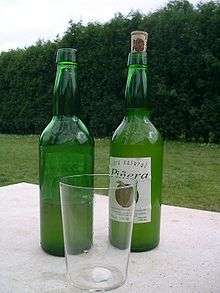
Cider, called "hard cider" in the United States and parts of Canada, is fermented from the juice and peels of apples. It is usually about as alcoholic as beer. Many areas produce cider, notably including Great Britain (especially in the West Country region); Normandy; Brittany, where it is traditionally drunk to accompany crêpes; Asturias and the Spanish Basque Country. In Hesse "Äbblwoi" is a popular drink. Cider was the most popular alcoholic beverage during the colonial era in the USA and even during its first century of independence, but it has since lost ground to beer, wine and spirits.
Mead is a honey-based beverage from northern Europe. Locally produced mead is also available in some Central European countries such as Slovakia, where it is called medovina. Tej, a honey wine that's a specialty of Ethiopia, is a closely-related drink.
Kumiz (or Airag in Mongolia) is a lightly alcoholic horse-milk wine popular throughout Central Asia and Mongolia. The fizzy, sour drink is drunk in large quantities during the summer months.
Vermouth, which comes in sweet and dry varieties, is a fortified wine (that is, a wine with added sugar), to which a bit more alcohol and a blend of aromatic ingredients is added. It is manufactured in both Italy and France, and it is sometimes drunk neat as an aperitif but also frequently used in cocktails.
Cocktails
Cocktails are mixed drinks, usually based on a hard liquor (e.g., whisky, rum, gin or vodka), combined with some amount of simple syrup (sugar dissolved in water) or sweet liqueur, and often bitters or bitter liqueur and fruit or vegetable juice, generally garnished with a piece of fruit, a leaf, or an olive. Possible combinations are almost endless, and cocktail bars can be found in many parts of the world. The International Bartenders Association maintains a list of official cocktails and recipes, which are used in bartending competitions, though many bars have their own in-house cocktails that are not available anywhere else. Coktails gained popularity during the Prohibtion era in the US, when spirits were more commonly smuggled than fermented beverages and mixing spirits was a common way to mask sub-par taste and quality and/or dilute the high alcohol content.
Nowadays, cocktails are particularly popular in the British Isles and parts of the Americas, where there are some local specialties. Here are a few of the famous ones (descriptions of cocktails below are to give the interested traveler an idea of what to expect and do not necessarily have exhaustive lists of ingredients):
The Bloody Mary is a savory, sometimes spicy cocktail that was invented in New York City and uses a vodka base, with tomato juice and various other flavorings. A variant popular in Canada is the Bloody Caesar, which adds clam broth.
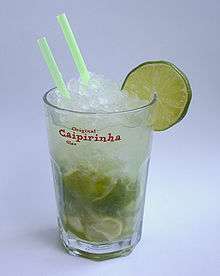
Caipirinhas use cachaça as their base, with limes and sugar, and are the national cocktail of Brazil.
The Gin and tonic was invented in India during the British Raj as a mix of tonic water — which in those days had a much higher content of Quinine, a medication to prevent malaria — with gin to make it more palatable for British soldiers. It is popular nowadays in Britain, Ireland, the United States, Canada, Spain, and various other countries.
Irish coffee, one of several types of coffee with added liquor (in this case, Irish whiskey), is quite popular in Ireland. Authentic Irish coffee has Irish whiskey and brown sugar added to the coffee, which is topped off with thick cream, though some modern varieties substitute the whiskey and cream with Bailey's Irish Cream instead.
Mai tais are rum-based and also use Curaçao liqueur. They were reportedly invented in California but have long since been staples of cocktail bars in Hawaii and other parts of Polynesia.
Manhattans are bourbon-based, with sweet vermouth and bitters, and come from Manhattan.
The Margarita, widely considered a Mexican drink in the United States but variously said to have been invented in Mexico or Texas, uses tequila as its base, combined with triple sec and lime juice, with the glass traditionally rimmed with salt.
The Martini was invented in the United States, though precisely where is a mystery. It is traditionally gin-based — though vodka is sometimes substituted, nowadays — combined with vermouth and famously garnished with an olive.
Mint juleps are bourbon-based and are a specialty of the Southern United States, especially Kentucky, and are considered the official drink of the Kentucky Derby, probably the most famous horse race in the United States and one of three that constitute the Triple Crown of American horse-racing.
Mojitos use white rum as their base, with limes and mint leaves, and are a specialty of Cuba.
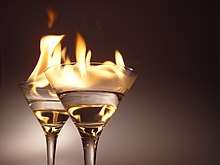
The Negroni, thought to have been invented in Florence and quite popular in Italy, is a somewhat bitter cocktail generally made with gin, vermouth rosso and Campari and garnished with a twist of orange.
The Old fashioned, one of the oldest cocktails recorded, was invented in New York City. It uses a base of bourbon or rye whiskey, combined with bitters, sugar, and water, traditionally garnished with a twist or slice of orange.
The Piña colada, a combination of rum, cream of coconut, and pineapple juice, is the official beverage of Puerto Rico.
The Pisco sour, a specialty of Peru and Chile, uses pisco — a local brandy — as its base, combined with Key lime juice and other ingredients including the egg whites that give it its typical frothy appearance.
The Sazerac is a specialty of New Orleans. It uses a base of cognac or rye whiskey, combined with bitters and absinthe or Herbsaint (both anise-based spirits).
Sex on the Beach comes in many variations, though the official version uses a vodka base with peach schnapps, orange juice and cranberry juice, with the glass garnished with an orange slice.
The Singapore Sling was naturally invented in Singapore and is considered the nation's signature cocktail. It is available on all Singapore Airlines flights and at many bars throughout the island, but the original is sold only at the Long Bar in the famed Raffles Hotel.
The original version of Tequila Sunrise was created in Phoenix, Arizona, but it bears little resemblance to the modern version, which was invented in California, the only thing in common being that both use tequila as their base.
Cocktails with a wine base
Mulled Wine (called by various names, including Glögg in Sweden, Glühwein in Germany and Austria and Vin Chaud in France) is a heated wine combined with sugar and spices. It is quite popular throughout much of Northern Europe and beyond in the Christmas season. It is also the (alcoholic) beverage most commonly sold at Christmas Markets.
Sangria, which uses a wine base combined with chopped fresh fruit, a sweetener, and often a bit of brandy, is popular in Spain and Portugal.
Beer-based drinks
While the big beer companies are coming up with new beer-based mixed drinks almost hourly, many beer-drinkers scoff at any but the most straightforward mixtures, such as:
- Radler (also known as Shandy), a beer and a lemon-based soft drink. In Canada, radlers are equal parts beer and grapefruit juice, while shandys are equal parts beer and ginger ale.
- Cola-Weizen (Coke and wheat beer)
Buy
As alcoholic beverages are heavily taxed in some countries, private import and duty-free shopping might be more economical for a traveller. Many travellers from high-tax countries such as the Nordic countries are driven by the sole purpose to buy cheap alcohol.
Many countries require businesses to be licensed in order to sell alcohol, which means your restaurant may or may not be allowed to serve you alcohol with your meal. If it has no liquor license, you may or may not be permitted to bring your own alcoholic drink to have with the meal. Some restaurants have a "bring your own" policy, which may be legal or merely tolerated, but it is never safe to assume if you aren't sure.
Bars/pubs
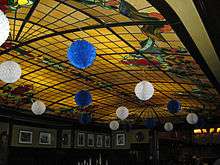
There are many types of bars and pubs around the world, serving different clientèles.
In Britain, Ireland, and Germany, it's expected that pubs and brew houses (Brauhäuser) will serve full meals as well as beer, and many people go to pubs for dinner and a drink after work. Many British pubs have outdoor sections in good weather, which are considered suitable for families. The Sunday roast — a large repast of roast beef and Yorkshire pudding, chicken, lamb, or some other kind of meat with a couple of boiled vegetables — is a traditional pub meal.
In Italy, many people get their morning coffee, tea, or hot chocolate and croissant at a bar, standing at the counter. You can purchase alcoholic drinks if you want to, but there is often no expectation that you will.
In Spain, especially Andalusia, an entire cuisine of small dishes — tapas — grew around the daily drinking of wine. Traditionally, tapas are eaten in the early evening after work, with dinner eaten much later at night. Also in Spain is the region of Asturias, which produces 80% of the country's cider and has sidrerías, bars dedicated to cider-drinking.
In Japan, there are sake bars that, like tapas bars, serve small dishes that are meant to be a good accompaniment to the alcoholic drinks of the house.
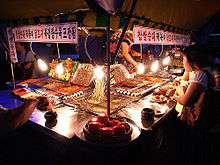
In South Korea you can find tented restaurants (usually in a bright orange color) on the street called pojangmacha, open from the early evening to the late morning. Here stressed out Koreans of all classes go to enjoy street food and no small measure of soju (Korean liquor). You can make friends very easily, and patronizing such establishments is a great way to try some basic Korean food such as tteokbokki.
In the United States and Canada, people who are not of age to drink alcohol are often forbidden entry to bars. Many American bars do not serve food, though in that case, you are usually permitted to bring your own food in. However, even gastro pubs in the US generally bar entry to underage people. Wine bars, at some of which you can have a very good meal accompanied by excellent wines, have become fashionable in American cities in recent years.
Stay healthy
Drink alcoholic drinks with moderation. Alcohol affects everyone differently, and knowing your limit is very important. Possible long term health events from excessive drinking can include liver damage and even blindness and death. The potential danger is increased when consuming illegally produced alcohol. Illegal spirits can contain various dangerous impurities including methanol, which can cause blindness or death even in small doses.
In some countries such as Russia, Japan, China and South Korea, colleagues and business partners are encouraged to drink excessively at after work events. Exercise caution if you are inexperienced at this.
While there are many remedies to the symptoms of a hangover (such as coffee or cold showers) there is no way to speed up the digestion of alcohol. Part of the cause of hangovers is dehydration, since alcohol tends to make you urinate more. Drinking large amounts of water before going to bed and/or as soon as you get up alleviates some symptoms in many cases.
Various experiments on mice and rats have measured the LD50 — the dosage that kills 50% of subjects — for ethyl alcohol; results have ranged from 3500 to 7000 mg/kg. Assume, to be safe, that the lower number applies for humans. Hard liquor is typically around 40% alcohol and the usual bottle is 750 ml (26 oz.), so it has has 300 ml of alcohol, or about 300,000 mg. That is enough that — if taken quickly, not much diluted, and on an empty stomach — it would have a 50% chance of killing an 85 kg (187 lb.) man.
Beer and wine are much less risky for either drunkenness or alcohol poisoning because they have a lower percentage of alcohol; wine is typically around 10%, beer around 5% in most countries though that varies greatly by brand.
Stay safe
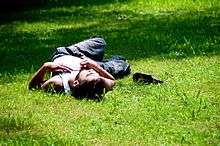
Don't drink and drive. Your ability to drive is adversely affected by alcohol, and the risk of accident is far greater. There are also legal prohibitions against driving under the influence of alcohol in most countries; some hunt impaired drivers as criminals (see "Stay legal" below).
Sports, or any strenuous physical activity, should not be undertaken after drinking alcohol. This is for both physical reasons (dehydration) as well as impaired judgement. Watching sports while impaired is a bad idea, especially when attending a sports event in the stadium. Stadium security is very no-nonsense about disorderly conduct under the influence and anything up to and including a lifetime ban may result.
Gambling is also risky when drunk, owing to impaired judgement.
Intoxication makes you a more vulnerable target for various forms of crime. See theft, common scams and pickpocketing.
Many people have been raped or robbed while impaired or even temporarily incapacitated by the intake of alcohol. If you have reason to believe your judgement, senses or reflexes could be adversely affected by a visit to a bar or nightclub, make sure you are with people you know and trust, who will be sober and dependable enough to look out for you.
Alcoholic drinks are also more likely to be "spiked" with some substance or other that further diminishes judgement and/or enables rape or robbery. To avoid someone slipping something into your drink without you noticing it, keep an eye on your drink all the time and don't leave your drink behind when going to the toilet. If you had a blackout and are sure it wasn't caused by alcohol but rather something you were tricked into taking, go to the police as fast as possible; such drugs (notably "K.O.-drops") often decay to the point of becoming undetectable within 24 hours, and having proof you were drugged enhances your chances in court.
Respect
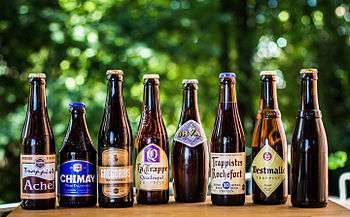
To be a good guest, it's important to respect teetotalers and people who drink every day alike, and it's good to understand how it is that some peoples and nations typically drink lustily and often, while others abstain.
Although drinking alcohol is legal in many countries, you should be sensitive to the local customs. Countries with large Muslim populations may take exception to foreigners publicly consuming alcohol, even if it is legal.
Many Christians reject excessive consumption of alcohol, and some denominations (such as Southern Baptists, Seventh Day Adventists and Mormons) are prohibited from drinking alcohol altogether. Abstaining for religious reasons is especially common in the USA, parts of the UK (notably Wales and Scotland), and countries affected by their evangelical missionaries. Islamic Law prohibits Muslims from consuming alcohol, with many regions in the Muslim world taking this prohibition extremely seriously, even if limited exceptions are made for visitors and non-Muslim residents. Some Hindu sects, most notably including the Hare Krishnas, prohibit alcohol consumption for their followers.
By contrast, Jews and many Christians traditionally use wine sacramentally, though grape juice can also be used for the same purposes. In Japan, sake is used in Shinto rites and ceremonies while in China, baijiu was traditionally drunk in various Confucian and Taoist ceremonies. Particularly in Europe, it is very common for practicing Christians to consider it perfectly normal to drink wine and beer, and many of the most famous beers are to this day produced by monks as a source of income for monasteries; the Olivetan monks in the Abbey of Monte Oliveto Maggiore in Chiusure produce wine commercially. In Germany, Brauhäuser may adjoin or be directly opposite a church and, after high masses, the Archbishop and numerous members of their congregation may be seen there enjoying food, drink and conviviality.
Of course drunkenness is no excuse to behave in an unacceptable manner and some countries that have no problem with drinking may have a taboo against getting drunk.
There are special conventions about many drinks, drinking at special occasions or drinking in general, at least partly varying from one region to another. Toasting before drinking (sometimes before every sip) is common. You might not be supposed to have a drink unless you offer a round. See Kyrgyzstan#Vodka for one example.
In some countries there is a social taboo regarding drinking "without a reason" and thus it may be customary to make a toast before drinking even if only "to the health of the people".
If you are invited to the home of a practicing Jew, a gift of a good kosher wine will be much appreciated. In cities with substantial Jewish populations, any large wine store should have a good selection of artisanal kosher wines from countries like Israel, the United States, France, Italy, Spain, South Africa, Australia and New Zealand.
Stay legal
Countries where alcohol is illegal
With the exception of extremely limited medical conditions (and in some cases, such as Iran, allowances for Jewish or Christian religious services), the production, sale and consumption of alcohol is illegal in:
- Saudi Arabia
- Kuwait
- Sudan
- Iran
- Libya
- Brunei
- Maldives (except on tourist resort islands)
- Specific states in India such as Gujarat and Mizoram
There are also some "dry" towns in the Canadian Arctic and some American small towns, counties and Indian reservations that prohibit the sale of alcohol.
Countries where the consumption of alcohol in public places is prohibited
"Public places" in this context means drinking on the street, in the park, et al. and does not apply to drinking in restaurants and bars with licenses to serve alcohol:
- The majority of states in the United States
- Lithuania
- Chile
- Pakistan
- United Arab Emirates
Many countries set the rules on public drinking at a local level, such as in Australia, Spain, Ireland, Sweden and the United Kingdom. You should check locally first.
Although in many countries consuming alcohol in public is allowed, being very drunk (or noisy) in public is an offense that can get you arrested.
And while alcoholic beverages are legal and common in some Muslim-majority countries (such as Turkey), consuming alcohol in public during Ramadan is frowned upon and may cause you problems with locals.
Minimum drinking age
There is often a minimum age, below which you cannot legally buy alcoholic beverages. In most of Europe it is 16, 17 or 18, and may differ for beer and wine vs. hard liquor (the alcohol content as such is usually not the determining factor, as for example a 5% alcohol by volume product that contains rum would be illegal for people under 18 years old, whereas a beer with the same alcohol content would be OK for a 16-year-old in Germany), and levels of enforcement vary by country. In most Nordic countries you need to be 20 to buy anything with an alcohol content of 22% or above (which in any case cannot be attained by fermenting alone). In East Asia, the drinking age is slightly higher than in Europe: 19 in South Korea and 20 in Japan. In Canada, the minimum is 18 or 19 (depending on province) to buy anything above 0.5% alcohol. In the United States, the minimum drinking age for all alcoholic beverages is 21 and generally strictly enforced. If you are of drinking age and plan to go to a bar, make sure to bring a valid form of identification that includes your date of birth, especially if you look close to underage - being asked for this ID is called "being carded" in the USA and Canada, and you should expect to be carded if you look to be younger than 25 even in places where the legal drinking age is 18. The drinking age can also affect the rest of the party: In some places, giving a minor alcohol may be a bigger offense than the minor drinking.
Driving while impaired
Not only is it unsafe to drive under the influence of alcohol, it is also generally illegal, and often subject to harsh punishment, which could in some instances include a heavy fine, suspension or revocation of your driver's license, impounding of the vehicle that was being driven, imprisonment, deportation, and permanent loss of permission to enter the jurisdiction where the crime took place. Some places won't allow you to enter if you have a drunk driving conviction even if it was in some other place entirely. In some places, you can even be publicly flogged for the crime. Moreover, in certain jurisdictions, a very small percentage of alcohol in your blood is considered to be impairing under the law, so don't assume you will be safe from legal trouble if you drive after having one glass of wine or beer. Drunk driving on non-motorized vehicles such as bicycles may be subject to the same restrictions, lesser sanctions or none at all. In some countries the (much higher) alcohol limit for bikes is hardly - if ever - enforced, possibly in part to discourage drunk use of motor vehicles. If you get into an accident or drive "suspiciously" you may be subject to even lower limits than usually apply for drunk driving, and insurance and liability are also often affected by your blood alcohol content at the time of the accident.

In many countries (notably the US, UK, Australia and Nordic countries), law enforcement will mount regular patrols to catch what is termed in the US "driving under the influence" (DUI). Such patrols also have authority to request you provide a breath sample, which will be used as evidence of your intoxication. Failure to provide such a sample (if not an offence in itself) will often be treated as suspicion of intoxication, and further more detailed questioning.
If you know that you will be drinking enough to be over the legal limit or otherwise too impaired to safely drive, make sure to take public transportation or a taxi, or arrange for a sober person to pick you up or act as your "designated driver." Make those arrangements before you or any member of your party has the first drink.
In some places, for example much of Canada, many bars will serve a designated driver all the soft drinks he or she wants, free.
If it is unsafe to drive under the influence, then it is also unsafe to operate a boat or indeed even a bike. Despite the folkloric image of a drunken sailor - (dating back to an era of impressment where getting people drunk and loaded on a boat that was at sea when they woke up was a common "recruitment tactic"), they are best left ashore.